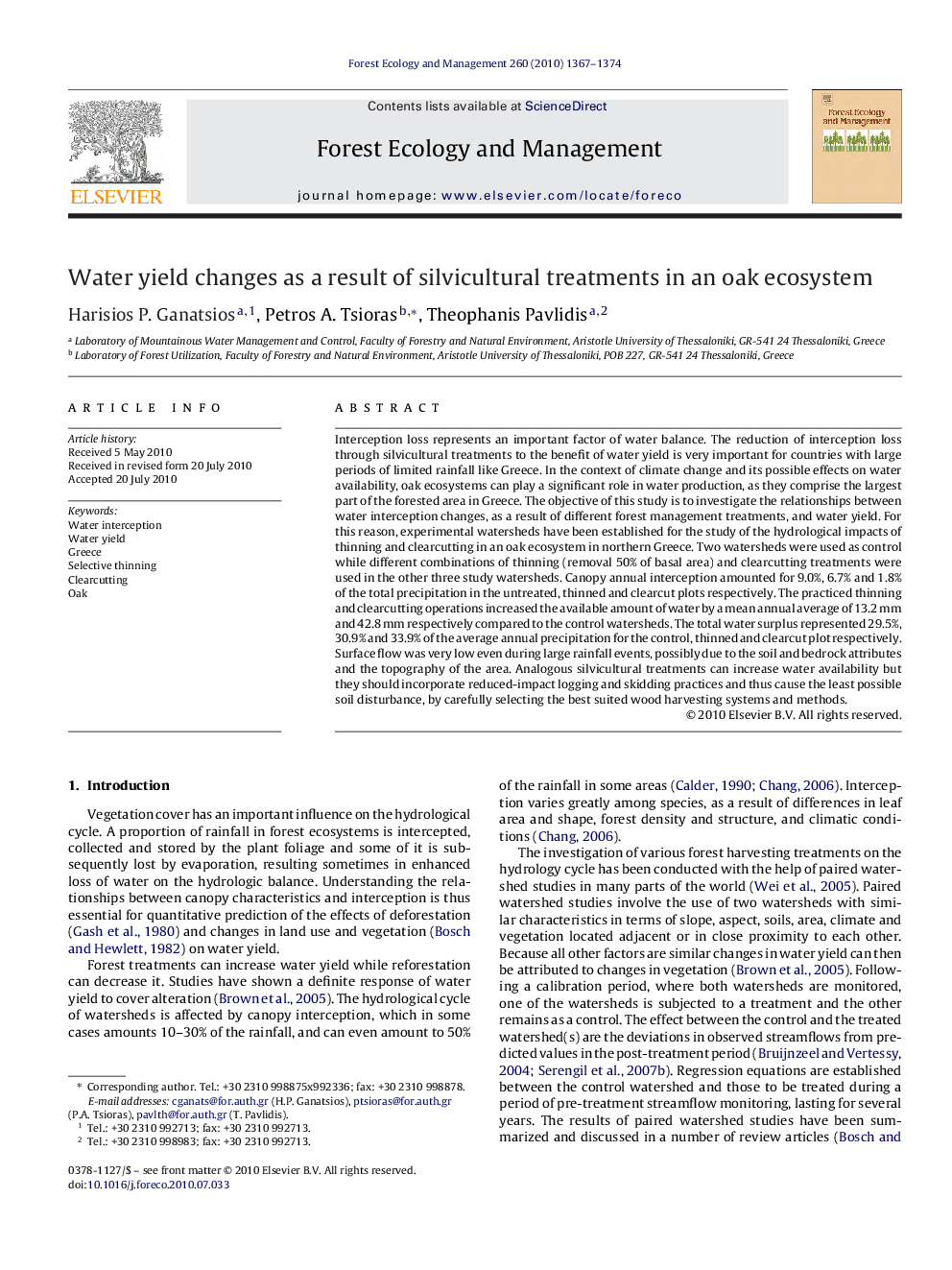| کد مقاله | کد نشریه | سال انتشار | مقاله انگلیسی | نسخه تمام متن |
|---|---|---|---|---|
| 88353 | 159299 | 2010 | 8 صفحه PDF | دانلود رایگان |

Interception loss represents an important factor of water balance. The reduction of interception loss through silvicultural treatments to the benefit of water yield is very important for countries with large periods of limited rainfall like Greece. In the context of climate change and its possible effects on water availability, oak ecosystems can play a significant role in water production, as they comprise the largest part of the forested area in Greece. The objective of this study is to investigate the relationships between water interception changes, as a result of different forest management treatments, and water yield. For this reason, experimental watersheds have been established for the study of the hydrological impacts of thinning and clearcutting in an oak ecosystem in northern Greece. Two watersheds were used as control while different combinations of thinning (removal 50% of basal area) and clearcutting treatments were used in the other three study watersheds. Canopy annual interception amounted for 9.0%, 6.7% and 1.8% of the total precipitation in the untreated, thinned and clearcut plots respectively. The practiced thinning and clearcutting operations increased the available amount of water by a mean annual average of 13.2 mm and 42.8 mm respectively compared to the control watersheds. The total water surplus represented 29.5%, 30.9% and 33.9% of the average annual precipitation for the control, thinned and clearcut plot respectively. Surface flow was very low even during large rainfall events, possibly due to the soil and bedrock attributes and the topography of the area. Analogous silvicultural treatments can increase water availability but they should incorporate reduced-impact logging and skidding practices and thus cause the least possible soil disturbance, by carefully selecting the best suited wood harvesting systems and methods.
Research highlightsRemoval of 50% of basal area led to an annual average decline of interception of 34.3%. ▶ A potential for increasing water wield in Q. frainetto forests is identified. However, in order to make the best possible use of this potential, there is need for scientifically sound knowledge through further research on the interaction between various silvicultural treatments and the hydrological processes.▶ Water and wood production can be successfully combined under the precondition that forest treatments should not exceed the capacity of soil to recover by natural processes.
Journal: Forest Ecology and Management - Volume 260, Issue 8, 15 September 2010, Pages 1367–1374